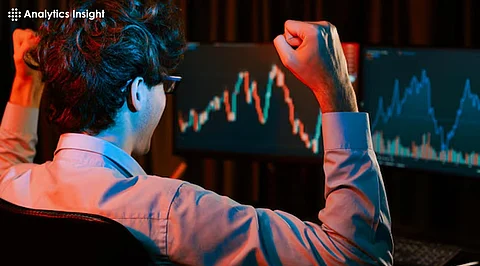

The emergence of digital money has changed the way individuals perceive money. Cryptocurrencies are a new means of transferring value and making money-making opportunities. Among them, crypto trading is gaining widespread popularity.
In this article, we will clarify what crypto trading is, how it operates, and what you need to know about its advantages and disadvantages. By dividing the ideas into concise sections, we hope to offer real-world insights for anyone looking to enter the crypto trading arena.
Crypto trading is the process of purchasing and selling cryptocurrencies to earn a profit based on price differences. Contrary to long-term investment, in which one keeps assets for years, trading aims at taking advantage of short-term market changes. Simply put, traders purchase cryptocurrencies when prices are low and sell when prices are high.
Trading is performed on multiple platforms referred to as exchanges. The exchanges exist in various forms, ranging from conventional centralized websites where users load money and directly trade to decentralized systems whereby trades are conducted through automated systems. Platforms even exist that provide derivative trading instruments such as CFDs (contracts for difference), through which traders can speculate on price shifts without actually having the underlying security.
Common terminology in crypto trading includes "orders," which are to buy or sell at a certain price; "spreads," which refer to the difference between the selling and buying price; and "leverage," which allows traders to have control of a high position using lesser capital. These all contribute to a situation where well-informed decisions and swift actions are necessary.
Crypto trading is very similar to trading in conventional financial markets, with some differences. When an order is placed on an exchange, your trade is matched with another user's order on an order book, a dynamic list of all the pending buy and sell orders. When a match is identified, the transaction happens immediately at the current market price.
The technology behind these transactions is blockchain. Each time a trade is made, it is logged on a decentralized ledger that is kept by many computers across the globe. This system is transparent and secure, as each transaction can be checked by the network without a central authority.
Different approaches are employed in crypto trading. Someday trade, making several trades daily to capitalize on small price changes. Others employ swing trading, keeping positions from days to weeks, or even arbitrage, buying at one exchange and selling at another to make a profit out of price differences. In all instances, knowledge of technical analysis and market indicators can be used to forecast trends as well as make better decisions.
Another significant factor is the supply and demand impact on cryptocurrency prices. Mining rewards, issuance rates, and network usage directly influence the amount of a cryptocurrency in existence. Market sentiment, influenced by news, regulatory changes, and overall economic conditions, also plays a major role in price movement. As all these interact, traders need to stay aware of how changes in any of these areas might affect their positions.
One of the greatest draws of crypto trading is the possibility of high returns. Because digital assets are so volatile, prices can fluctuate wildly in a short amount of time. This volatility can be used to make fast profits if a trader accurately predicts market movement. Also, since cryptocurrency markets are open 24/7, traders are not restricted by standard business hours. This round-the-clock market access offers flexibility to react immediately to global events or sudden shifts in market sentiment.
Another benefit is the possibility of diversification. Crypto trading allows individuals to invest in a variety of digital assets, from well-established coins like Bitcoin and Ethereum to emerging altcoins. Such diversification can help spread risk, especially in a market where different assets may not always move in tandem.
Yet, with great reward comes great risk. The high volatility that can bring great gains also introduces the possibility of great losses. Regulatory risks add to the danger since government policies surrounding virtual currencies are still being developed around the globe. Unlike other investments, cryptocurrency is not supported by entrenched institutions or the law, so if something does go wrong, like an exchange hack or a scam, investors cannot necessarily do anything about it.
Security is also a concern. Although blockchain technology is strong, the platforms and wallets in which cryptocurrencies are stored may be susceptible to cyberattacks. Traders need to be careful about protecting their private keys and employing good security habits. Moreover, the environmental cost of cryptocurrency mining, which secures the trading system by authenticating transactions, is increasingly becoming a point of concern. The high energy consumption involved in mining has raised issues regarding short-term and long-term sustainability.
To counter these risks, veteran traders employ tools of risk management like stop-loss orders. Such orders close an existing position automatically when the market goes against the trader, limiting the possible loss. Diversification, constant market analysis, and trading with credible exchanges are also essential tactics to counterbalance the intrinsic risks of crypto trading.
Crypto trading has become an intriguing but tricky prospect in the modern financial arena. By gaining an understanding of the fundamentals of what crypto trading is, how orders are carried out on electronic exchanges, and the technology supporting these transactions, traders can navigate the market more assuredly. The benefits, such as potentially high returns, access to markets, and diversification, render crypto trading attractive. Nevertheless, the serious risks emanating from market unpredictability, regulatory risks, security loopholes, and environmental issues ensure that traders need to venture into this area with vigilance and thoroughly thought-through strategies.
Ultimately, successful crypto trading is a matter of ongoing learning, prudent risk management, and having a solid grasp of both the potential benefits and risks. Whether you are just starting in digital asset trading or seeking to hone your approaches, being up to date and responsive to changes in the market will be essential to long-term success in this ever-changing environment.
